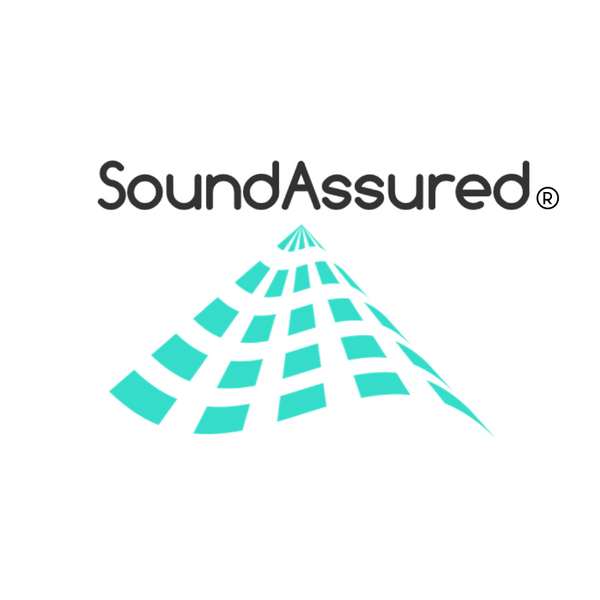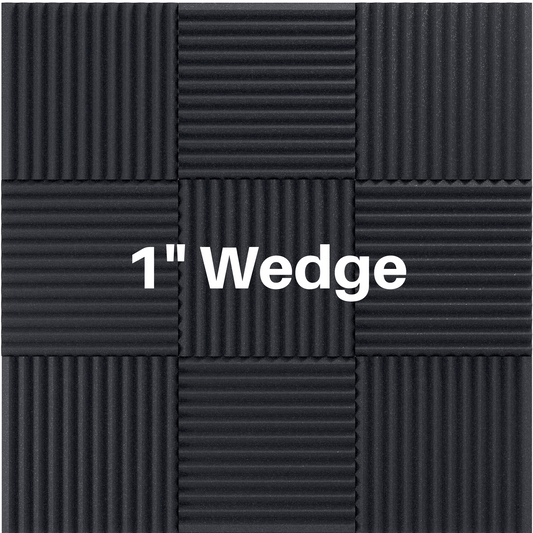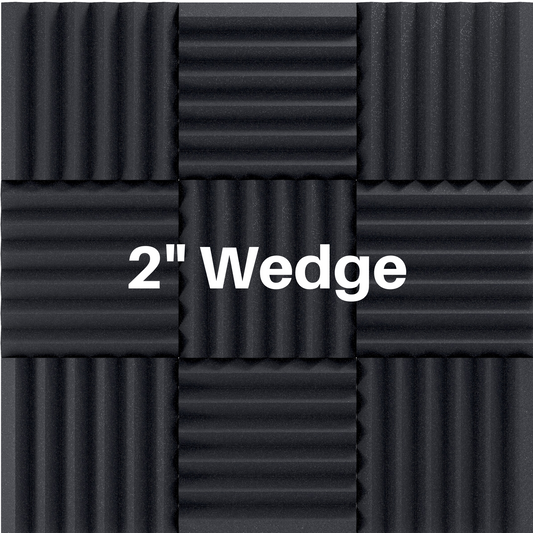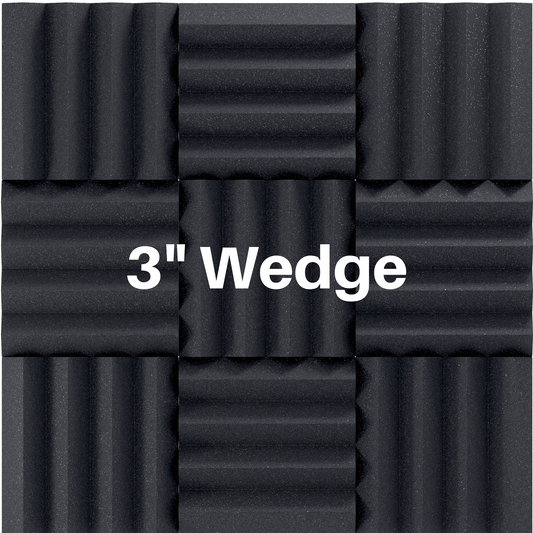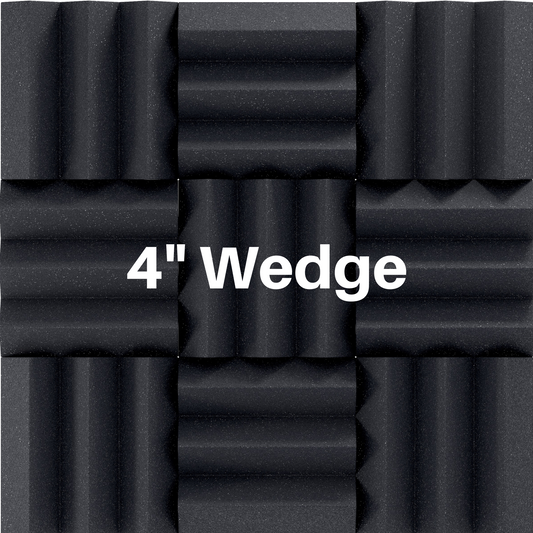How Long Are Sound Waves?
Share
Sound waves travel through the air in different lengths depending on their frequency. Lower sounds (like bass) have long waves, while higher sounds (like cymbals or birds chirping) have short waves. Understanding this can help you choose the right acoustic treatment for your space.
The image below shows how low-frequency sounds have long wavelengths, while high-frequency sounds have short wavelengths.

Wavelengths of Common Sounds
| Frequency (Hz) | Wavelength (ft) |
Quarter Wavelength (in)
|
| 125 Hz (Deep Bass) | 9 ft | 27 in |
| 250 Hz (Warm Bass) | 4.5 ft | 13.5 in |
| 500 Hz (Speech Range) | 2.25 ft | 6.75 in |
| 1,000 Hz (Higher Speech) | 1.125 ft | 3.4 in |
| 2,000 Hz (Crisp Highs) | 6.75 in | 1.7 in |
📌 Lower frequencies (bass) take up more space, while higher frequencies have shorter, more focused waves.
How Acoustic Panels Absorb Sound
Acoustic panels work by trapping sound waves and reducing how much they bounce around a room. But thickness matters! Foam is most effective at absorbing frequencies where its thickness is at least 1/4 of the wavelength of the sound.
The quarter-wavelength rule states that porous absorbers (like foam) are most effective at frequencies where their thickness is 1/4 the wavelength of the sound wave. This is why thicker foam dramatically improves low-frequency absorption.
Absorption does not increase linearly with thickness. NRC increase follows a logarithmic curve, meaning a doubling in thickness does NOT equal a doubling in NRC. Instead, low-frequency absorption improves significantly, while high-frequency absorption plateaus. For example moving from 1” to 2” foam nearly doubles NRC, but going from 4” to 6” provides a much smaller NRC gain.
💡 The thicker the foam, the better it absorbs low frequencies!
The Wavelength Formula
The length of a sound wave is calculated using this simple formula:
📏 Wavelength (ft) = Speed of Sound (ft/sec) ÷ Frequency (Hz)
Since the speed of sound in air is about 1,130 feet per second, you can estimate wavelengths like this:
- A 100 Hz wave (deep bass) = 1,130 ÷ 100 = 11.3 ft
- A 500 Hz wave (mid-range) = 1,130 ÷ 500 = 2.26 ft
- A 2,000 Hz wave (high-pitched sound) = 1,130 ÷ 2,000 = 6.75 inches
This is why bass waves are so large—they physically take up more space in a room! That’s also why low frequencies require thicker absorption materials or bass traps to control properly.
Sound Wave Length Table
| Frequency (Hz) | Speed of Sound | Wavelength (ft) | Half Wavelength (ft) | Quarter Wavelength (ft) |
Quarter Wavelength (in)
|
| 20 | 1130 | 56.5 | 28.25 | 14.1 | 169 |
| 30 | 1130 | 37.7 | 18.83 | 9.42 | 113 |
| 40 | 1130 | 28.3 | 14.1 | 7.1 | 85 |
| 50 | 1130 | 22.6 | 11.3 | 5.7 | 70 |
| 60 | 1130 | 18.8 | 9.4 | 4.7 | 56 |
| 70 | 1130 | 16.1 | 8.1 | 4.05 | 49 |
| 80 | 1130 | 14.1 | 7.1 | 3.5 | 42 |
| 90 | 1130 | 12.5 | 6.25 | 3.1 | 37 |
| 100 | 1130 | 11.3 | 5.7 | 2.8 | 34 |
| 200 | 1130 | 5.7 | 2.9 | 1.4 | 17 |
| 300 | 1130 | 3.8 | 1.9 | 0.95 | 11 |
| 400 | 1130 | 2.8 | 1.4 | 0.7 | 8 |
| 500 | 1130 | 2.3 | 1.15 | 0.58 | 7 |
| 600 | 1130 | 1.9 | 0.95 | 0.48 | 6 |
| 700 | 1130 | 1.6 | 0.8 | 0.4 | 5 |
| 800 | 1130 | 1.4 | 0.7 | 0.35 | 4 |
| 900 | 1130 | 1.3 | 0.65 | 0.32 | 4 |
| 1000 | 1130 | 1.1 | 0.55 | 0.28 | 3 |
| 2000 | 1130 | 0.6 | 0.3 | 0.15 | 2 |
| 3000 | 1130 | 0.4 | 0.2 | 0.1 | 1 |
